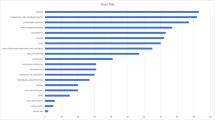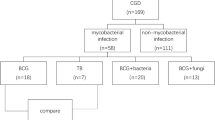Abstract
Opportunistic pulmonary infections are a major cause of post-transplant morbidity and mortality. Among these infections, Aspergillus is a common cause of fatal pneumonia. Owing to the precarious clinical condition of many patients who acquire invasive mold infections, clinicians often treat them on the basis of radiographic findings, such as the halo sign. However, in patients who do not respond to treatment or who have uncommon presentations, bronchoscopy or lung biopsy looking for other pathogens should be considered. This study describes two cases in which the radiographic halo signs characteristic of Aspergillus were in fact due to Legionella jordanis, a pathogen that has been culture proven only in two patients previously (both of whom had underlying lung pathology) and diagnosed by serologic evidence in several other patients. In immunocompromised patients, Legionella can present as a cavitary lesion. Thus, presumptive treatment for this organism should be considered in post-transplant patients who do not have a classic presentation for invasive fungal infection and/or who fail to respond to conventional treatment. These cases illustrate the importance of obtaining tissue cultures to differentiate among the wide variety of pathogens present in this patient population.
This is a preview of subscription content, access via your institution
Access options
Subscribe to this journal
Receive 12 print issues and online access
$259.00 per year
only $21.58 per issue
Buy this article
- Purchase on Springer Link
- Instant access to full article PDF
Prices may be subject to local taxes which are calculated during checkout







Similar content being viewed by others
References
Feinstein MB, Mokhtari M, Ferreiro R, Stover D, Jakubowski A . Fiberoptic bronchoscopy in allogeneic bone marrow transplantation: findings in the era of serum cytomegalovirus antigen surveillance. Chest 2001; 120: 1094–1100.
Yen KT, Lee AS, Krowka MJ, Burger CD . Pulmonary complications in bone marrow transplantation: a practical approach to diagnosis and treatment. Clin Chest Med 2004; 25: 189–201.
Wingard JR, Hsu J, Hiemenz JW . Hematopoietic stem cell transplantation: an overview of infection risks and epidemiology. Infect Dis Clin North Am 2010; 24: 257–272.
Mori T, Kato J . Cytomegalovirus infection/disease after hematopoietic stem cell transplantation. Int J Hematol 2010; 91: 588–595.
Casper J, Camitta B, Truitt R, Baxter-Lowe LA, Bunin N, Lawton C et al. Unrelated bone marrow donor transplants for children with leukemia or myelodysplasia. Blood 1995; 85: 2354–2363.
Chaudhury S, Auerbach AD, Kernan NA, Small TN, Prockop SE, Scaradavou A et al. Fludarabine-based cytoreductive regimen and T-cell-depleted grafts from alternative donors for the treatment of high-risk patients with Fanconi anaemia. Br J Haematol 2008; 140: 644–655.
Ratcliffe RM, Lanser JA, Manning PA, Heuzenbroeder MW . Sequence-based classification scheme for the genus Legionella targeting the mip gene. J Clin Microbiol 1998; 36: 1560–1567.
Greene RE, Schlamm HT, Oestmann JW, Stark P, Durand C, Lortholary O et al. Imaging findings in acute invasive pulmonary aspergillosis: clinical significance of the halo sign. Clin Infect Dis 2007; 44: 373–379.
Sakai F, Tokuda H, Goto H, Tateda K, Johkoh T, Nakamura H et al. Computed tomographic features of Legionella pneumophila pneumonia in 38 cases. J Comput Assist Tomogr 2007; 31: 125–131.
Cherry WB, Gorman GW, Orrison LH, Moss CW, Steigerwalt HG, Wilkinson HW et al. Legionella jordanis: a new species of Legionella isolated from water and sewage. J Clin Microbiol 1982; 15: 290–297.
Thacker WL, Wilkinson HW, Benson RF, Edberg SC, Brenner DJ . Legionella jordanis isolated from a patient with fatal pneumonia. J Clin Microbiol 1988; 26: 1400–1401.
Vinh DC, Garceau R, Martinez G, Wiebe D, Burdz T, Reimer A et al. Legionella jordanis lower respiratory tract infection: case report and review. J Clin Microbiol 2007; 45: 2321–2323.
Fraser TG, Zembower TR, Lynch P, Fryer J, Salvaggio PR, Yeldandi AV et al. Cavitary Legionella pneumonia in a liver transplant recipient. Transpl Infect Dis 2004; 6: 77–80.
Miller ML, Hayden R, Gaur A . Legionella bozemanii pulmonary abscess in a pediatric allogeneic stem cell transplant recipient. Pediatr Infect Dis J 2007; 26: 760–762.
Bornstein N, Janin N, Bourguignon G, Surgot M, Fleurette J . Prevalence of anti-Legionella antibodies in a healthy population and in patients with tuberculosis or pneumonia. Isr J Med Sci 1986; 22: 740–744.
Huerta M, Castel H, Grotto I, Shpilberg O, Alkan M, Harman-Boehm I . Clinical and epidemiologic investigation of two Legionella-Rickettsia co-infections. Isr Med Assoc J 2003; 5: 560–563.
Chunhaswasdikul B, Sukonthaman A, Lind K, Chinachoti T . Legionella jordanis pneumonia: a case report. J Med Assoc Thai 1986; 69: 283–287.
Eagan JA, Seo SK, Martin K, Zel P, Mahoney E, Schoen H et al. Institutional response to a case of Legionella jordanis/bozemanii pneumonia in a bone marrow transplant recipient. Society for Healthcare Epidemiology of America Annual Meeting, Toronto, Canada, 2001.
New York City Department of Health and Mental Hygiene 2009 Alert 26: Increase in Legionellosis Citywide. http://www.nyc.gov/html/doh/downloads/pdf/cd/2009/09md26.pdf (accessed 10 November 2010).
Cimini D . E-mail Communication. New York City Department of Health and Mental Hygiene: New York, 2010.
Author information
Authors and Affiliations
Corresponding author
Ethics declarations
Competing interests
The authors declare no conflict of interest.
Additional information
This article has been corrected since Advance Online Publication and a corrigendum is also printed in this issue
Rights and permissions
About this article
Cite this article
Meyer, R., Rappo, U., Glickman, M. et al. Legionella jordanis in hematopoietic SCT patients radiographically mimicking invasive mold infection. Bone Marrow Transplant 46, 1099–1103 (2011). https://doi.org/10.1038/bmt.2011.94
Received:
Accepted:
Published:
Issue Date:
DOI: https://doi.org/10.1038/bmt.2011.94
Keywords
This article is cited by
-
Legionellosis after hematopoietic stem cell transplantation
Bone Marrow Transplantation (2021)
-
Dynamics of genome change among Legionella species
Scientific Reports (2016)
-
Legionellosis in Transplantation
Current Infectious Disease Reports (2016)



